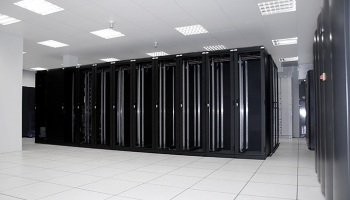The Green Grid today announced a Data Centre Maturity Model to help data centre operators improve sustainability, which extends the Green Grid’s field from power and cooling into the computing part of the data centre.
The Data Centre Maturity Model (DCMM) , which comes with an explanatory white paper, lets end users assess how resource-efficient their facilities are as well as identify what innovations are required for future improvements.
According to The Green Grid, the model provides operators with “clear goals and direction for improving energy efficiency and sustainability across all aspects of the data centre,” including power, cooling, compute, storage, and network. It also outlines current best practices and draws a five-year roadmap for the industry.
“We are not being prescriptive,” the Green Grid’s Jim Hearnden, a data centre power and cooling specialist at Dell UK said to eWEEK Europe at Data Centre World in London. The model includes guidance on compute and storage, aimed at getting users to stop over-specifying their servers and disks, and to use technologies effectively.
“We preach virtualisation,” said Hearnden,” but it is sometimes not practical in a given company.”
Data centre maturity levels
 DCMM classifies five different aspects of data centre sustainability, into five maturity levels. The site that sees minimal or no sustainability progress is classified as level 0, while those with “part best practice” and “best practice” are placed on level 1 and level 2 respectively.
DCMM classifies five different aspects of data centre sustainability, into five maturity levels. The site that sees minimal or no sustainability progress is classified as level 0, while those with “part best practice” and “best practice” are placed on level 1 and level 2 respectively.
To achieve levels 3 and 4, the site must show “reasonable steps” between current best practices and the visionary five-year projection. The highest ranking is level 5, where the facility is classified as “visionary”.
According to The Green Grid, levels 3 to 5 represent data centres that demonstrate “future capabilities toward which the industry should collectively move and innovate”.
The areas covered include Storage, Compute, Power, Cooling and Management.
How does DCMM work?
DCMM is based on self-assessment, where the company assesses its own data centres’ efficiency with the Data Centre Maturity Model Equaliser (pictured above). The equaliser has different bars for parts of the model, and measures the company’s achievements in as power, cooling compute and storage, against the theoretical maximum, and the organisation’s target.
According to The Green Grid, DCMM has not been created as a rating system or for certification, and it also tries not to overlap with comparable efforts such as the EU Code of Conduct for data centres, and work within the BCS.
“It’s a road map, not a code of conduct,” said Hearnden. “It shows where you are now, where your medium term goals are, and the Nirvana you are aiming at.”
The Green Grid has also consulted globally on its maturity model, while the EU Code is, by its nature, European, said Hearnden.
Alongside the Green Grid’s Power Utilisation Efficiency (PUE) measure, which the Green Grid is pushing as aglobal data efficiency metric, the maturity model also has a place for the Grid’s proposed new metrics.
They include Carbon Usage Effectiveness (CUE) – an assessment of the total CO2 emissions caused by the total data center energy. Also included is Water Usage Effectiveness (WUE) a proposal still in its early stages which assesses the amount of water used on-site for operation of the facility, and ERE – a measure which extends PUE by crediting the site for energy re-use.
Peter Judge contributed to this report.




